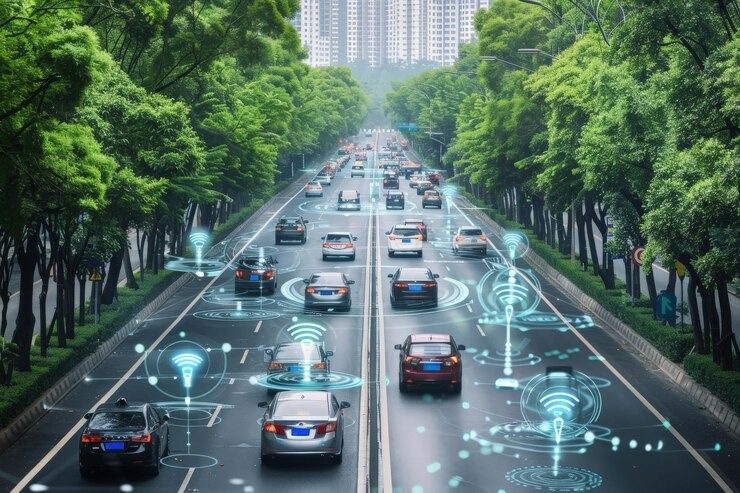Move over, self-driving cars – autonomous vehicles (AVs) are the new hot wheels on the block. These tech marvels promise to revolutionize transportation, taking us from “white-knuckling it in traffic” to “chilling in a self-driving Uber” in a not-so-distant future. The rise of autonomous vehicles is no longer science fiction; it’s a reality hurtling down the highway towards us.
The dream of autonomous vehicles dates back to the early 20th century with rudimentary remote-controlled cars. While early advancements focused on functionality, the 1980s saw researchers like Ernst Dickmanns outfitting vans with advanced sensors for more complex navigation. The 90s brought about significant milestones like the “No Hands Across America” coast-to-coast journey by a self-driving minivan, demonstrating the potential for long-distance autonomy. Today with digitalization, tech giants and automakers are heavily invested in developing this technology, with the future of transportation likely featuring a phased roll-out of autonomous vehicles, reshaping traffic flow, accessibility, and even our commutes.
Why is Everyone Buzzing About Autonomous Vehicles?
The rise of autonomous vehicles isn’t just about having a fancy robot chauffeur. These advancements could significantly impact the field:
Safety First: Human error is a major cause of traffic accidents. AVs, equipped with advanced sensors and AI, promise to significantly reduce accidents, making our roads safer for everyone.
Traffic Flow Fixer: Imagine rush hour without the road rage! AVs can communicate with each other and optimize traffic flow, easing congestion and getting you to your destination faster.
Freedom for All: For those who can’t drive due to age, disability, or other reasons, AVs offer independence and mobility. They can be a game-changer for a significant portion of the population.
Productivity on the Go: Stuck in traffic? No problem! With AVs, your commute time can be transformed into productive work hours or a well-deserved relaxation session.
Environmental Benefits: AVs, especially electric ones, can contribute to a greener future. Optimized traffic flow and reduced reliance on personal vehicles can lead to lower emissions.
The Rise of Autonomous Vehicles: Challenges on the Road Ahead
While the potential benefits are undeniable, the rise of autonomous vehicles also comes with some challenges:
Tech Hurdles: Ensuring the safety and reliability of AV technology is paramount. Sensor limitations, complex weather conditions, and unforeseen scenarios require constant innovation.
The Legal Labyrinth: Who’s responsible in case of an accident? Clear legal frameworks and regulations need to be established to govern the use of AVs.
The Human Factor: With automation, will we lose the joy of driving? How will AVs interact with human-driven vehicles and pedestrians? Societal acceptance and adaptation will be crucial.
The Job Market Shift: The rise of AVs could potentially impact jobs in the transportation sector. Transition plans and retraining programs will be necessary.
The Road Ahead: A Collaborative Journey
The rise of autonomous vehicles is a complex issue requiring collaboration between tech giants, policymakers, and auto manufacturers. Here are some potential scenarios for the future:
Phased Approach: We might see a gradual rollout of AV technology, starting with controlled environments and limitations, before full autonomy becomes a reality.
Human-AV Collaboration: The future might involve a hybrid approach, where AVs handle routine tasks and humans take over in complex situations.
Focus on Safety: Rigorous testing, safety protocols, and continuous improvement will be crucial to ensure public trust in AV technology.
Evolving Infrastructure: Our roads and infrastructure might need to adapt to accommodate the needs of AVs, like dedicated lanes or communication networks.
The Rise of Autonomous Vehicles: A Future Filled with Possibilities
The rise of autonomous vehicles is an exciting development with the potential to transform our world. While challenges remain, the potential benefits for safety, efficiency, and accessibility are undeniable. By working together, we can navigate the roadblocks and ensure the rise of autonomous vehicles paves the way for a smoother, safer, and more sustainable future of transportation. So, buckle up and get ready for the ride – the future of mobility is arriving sooner than you think!







